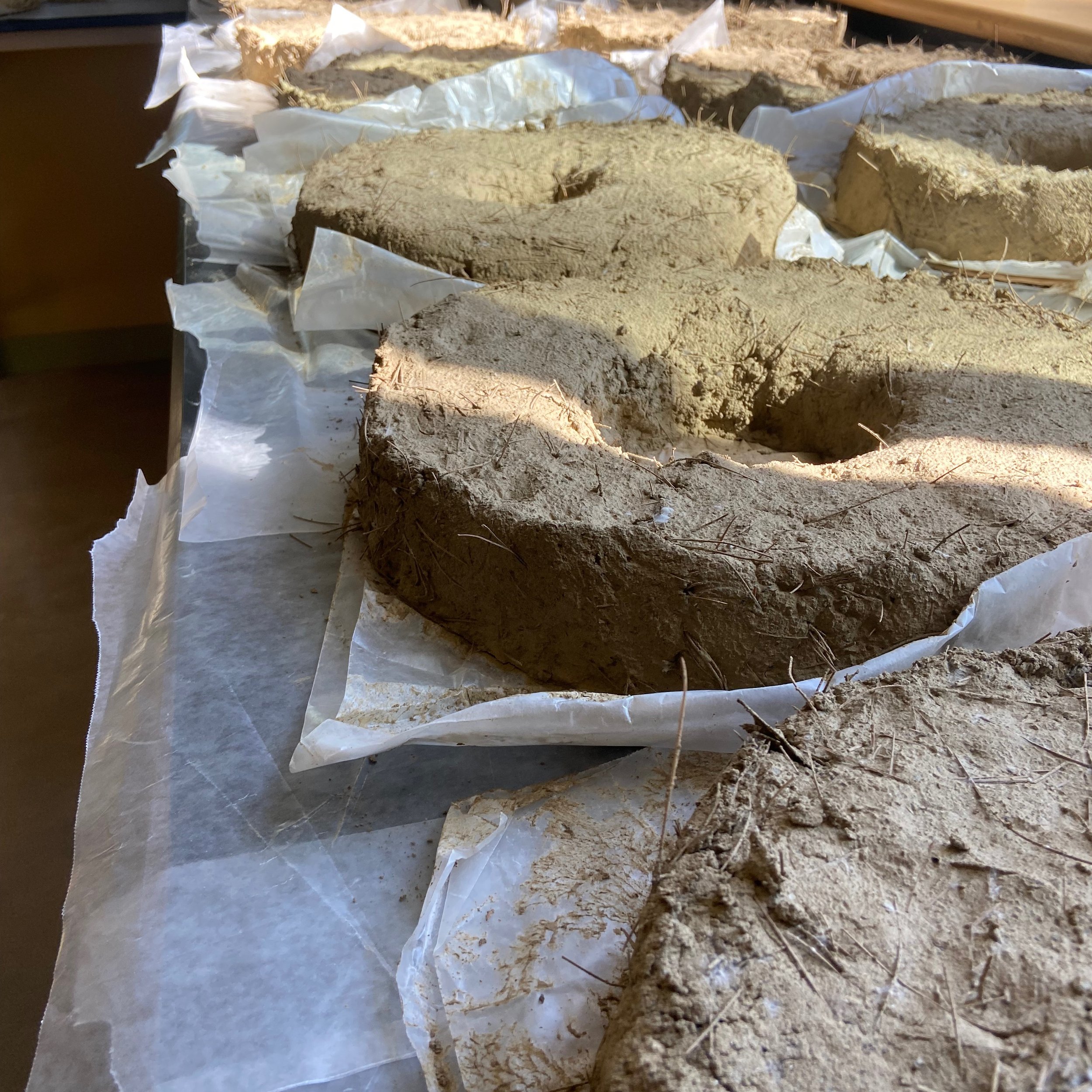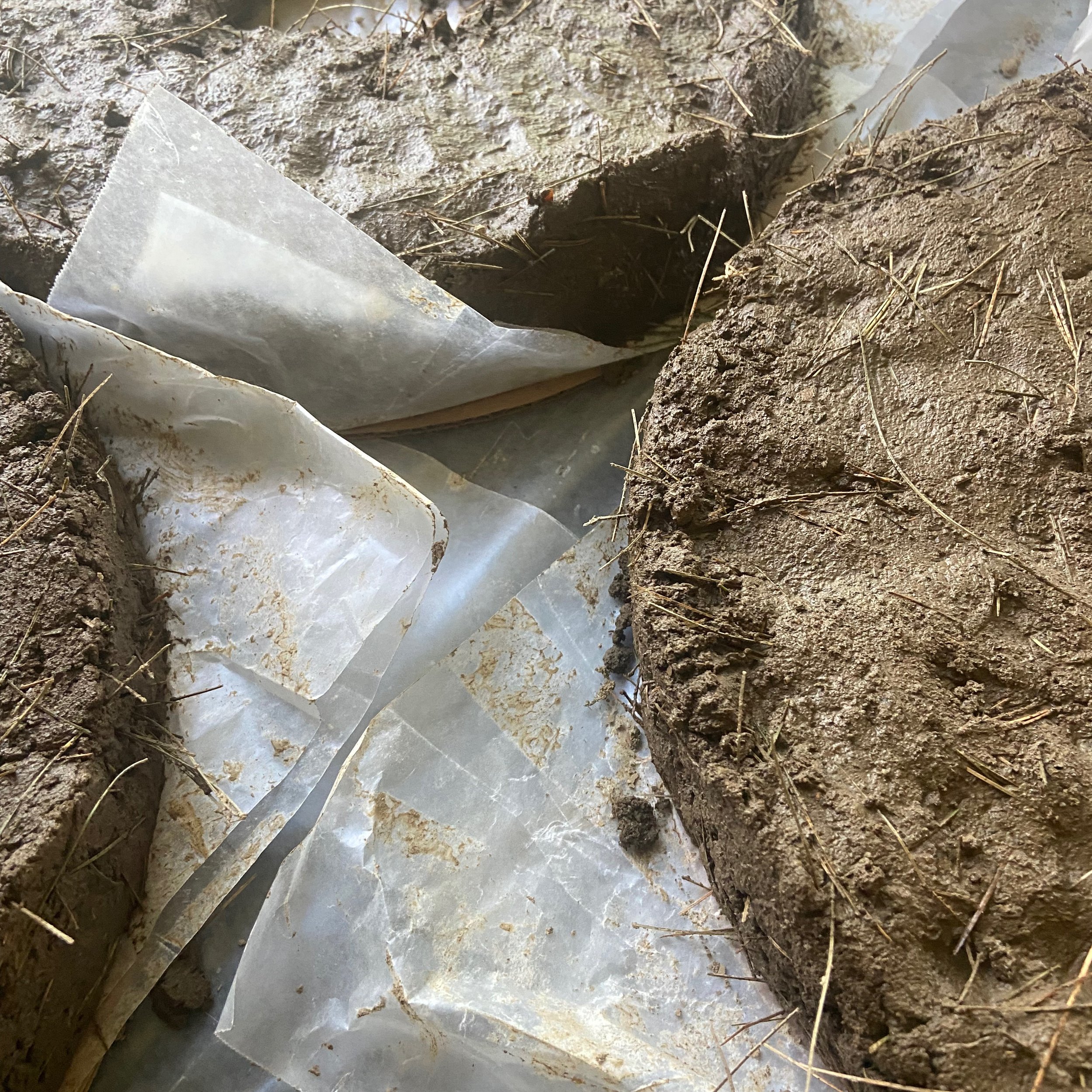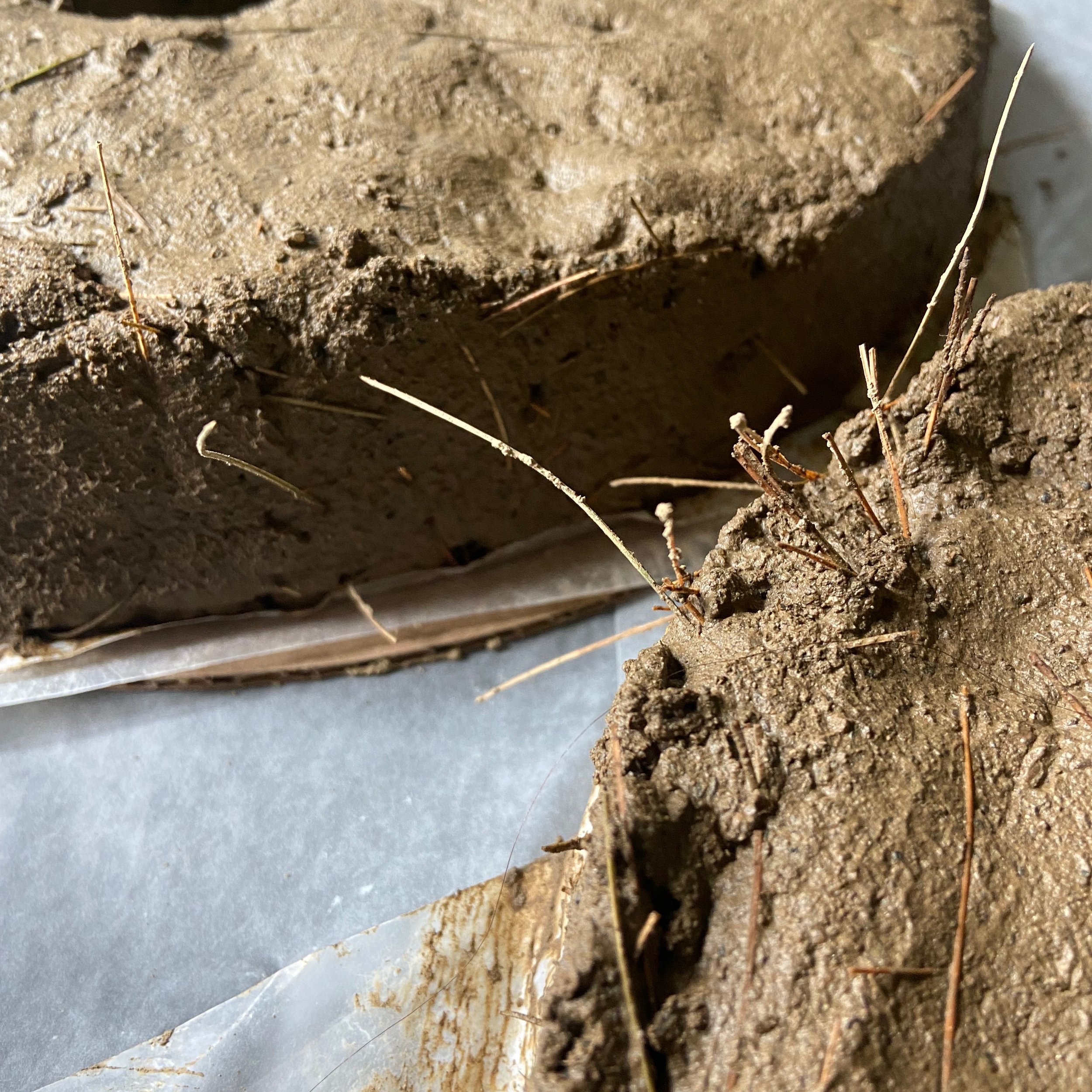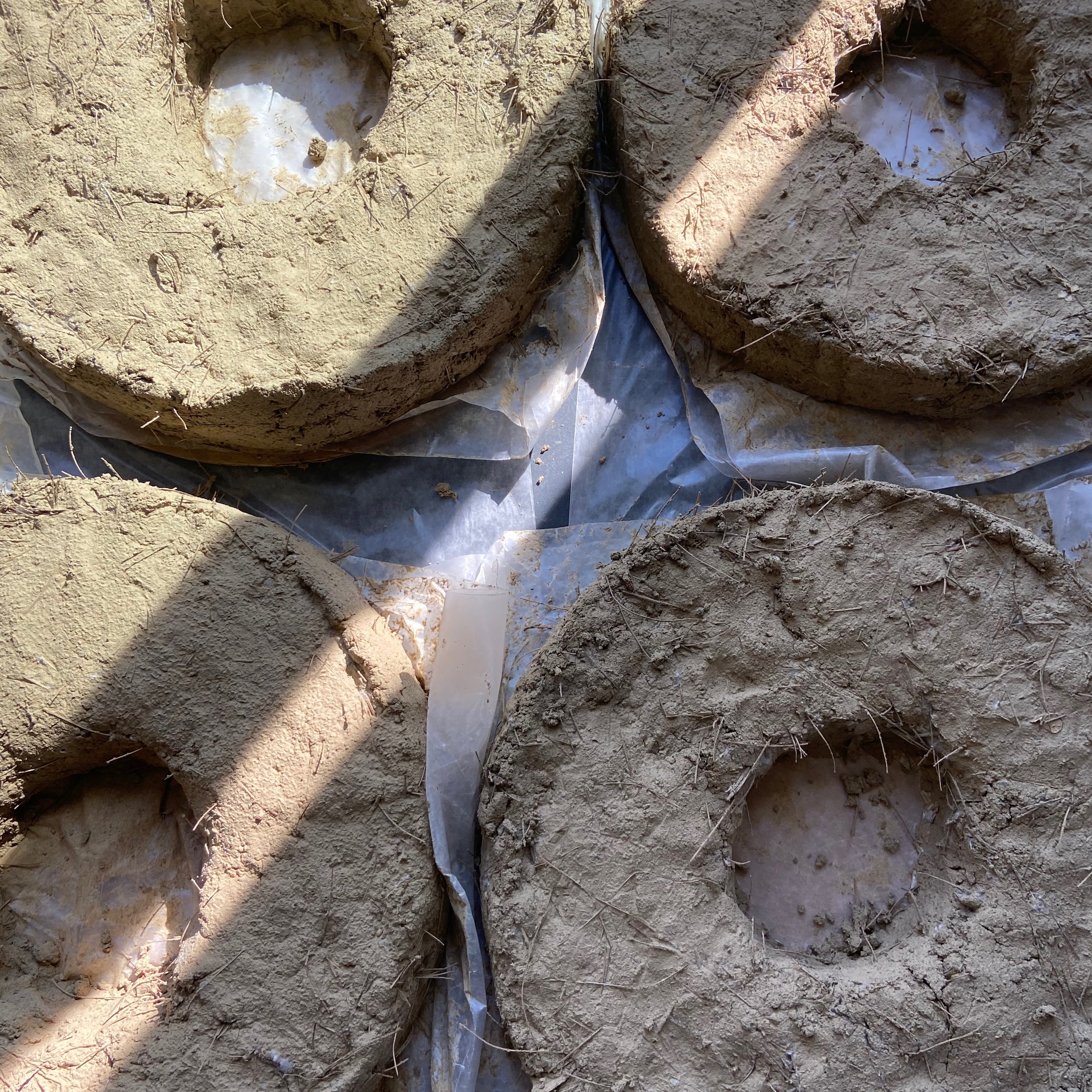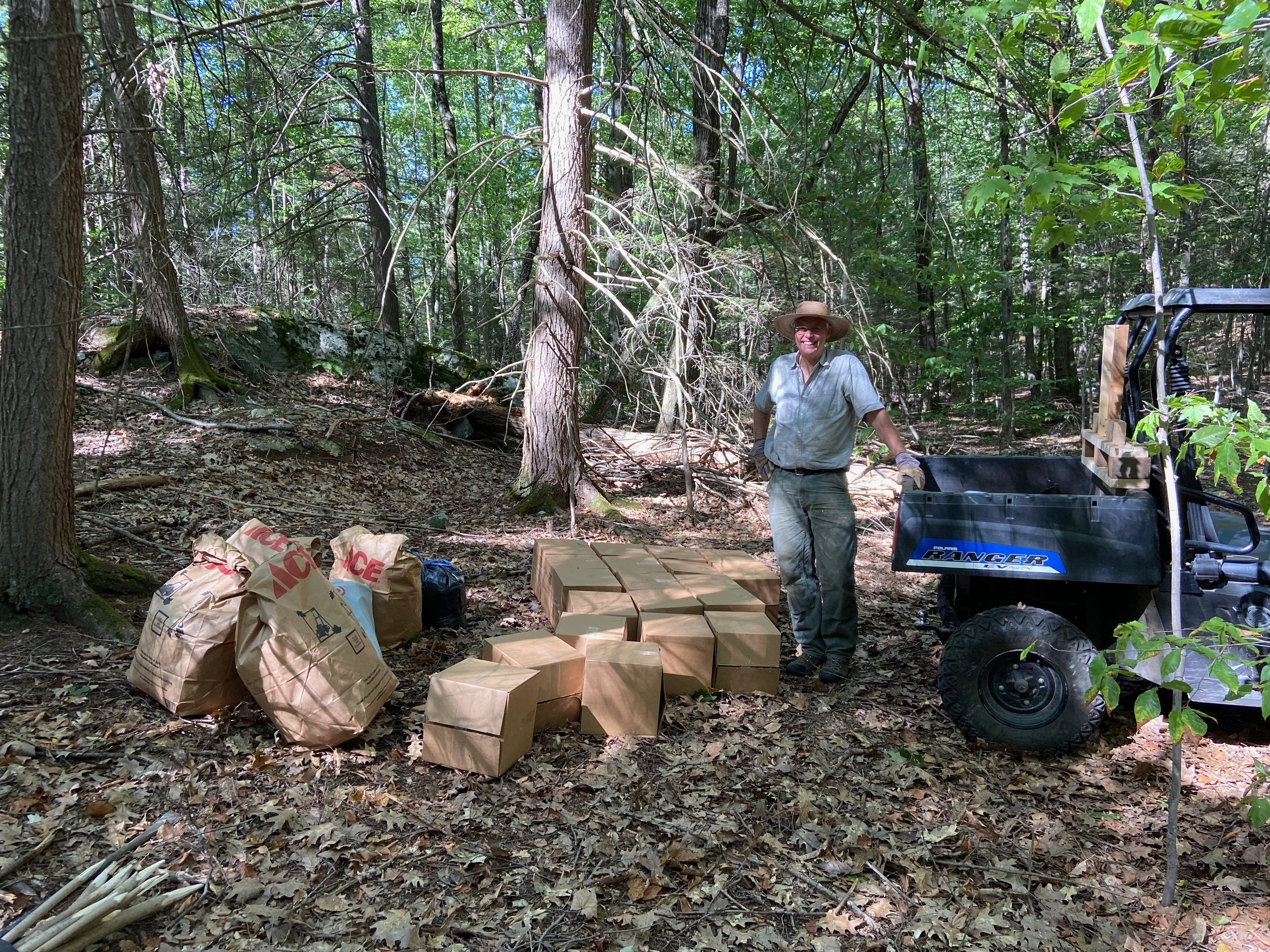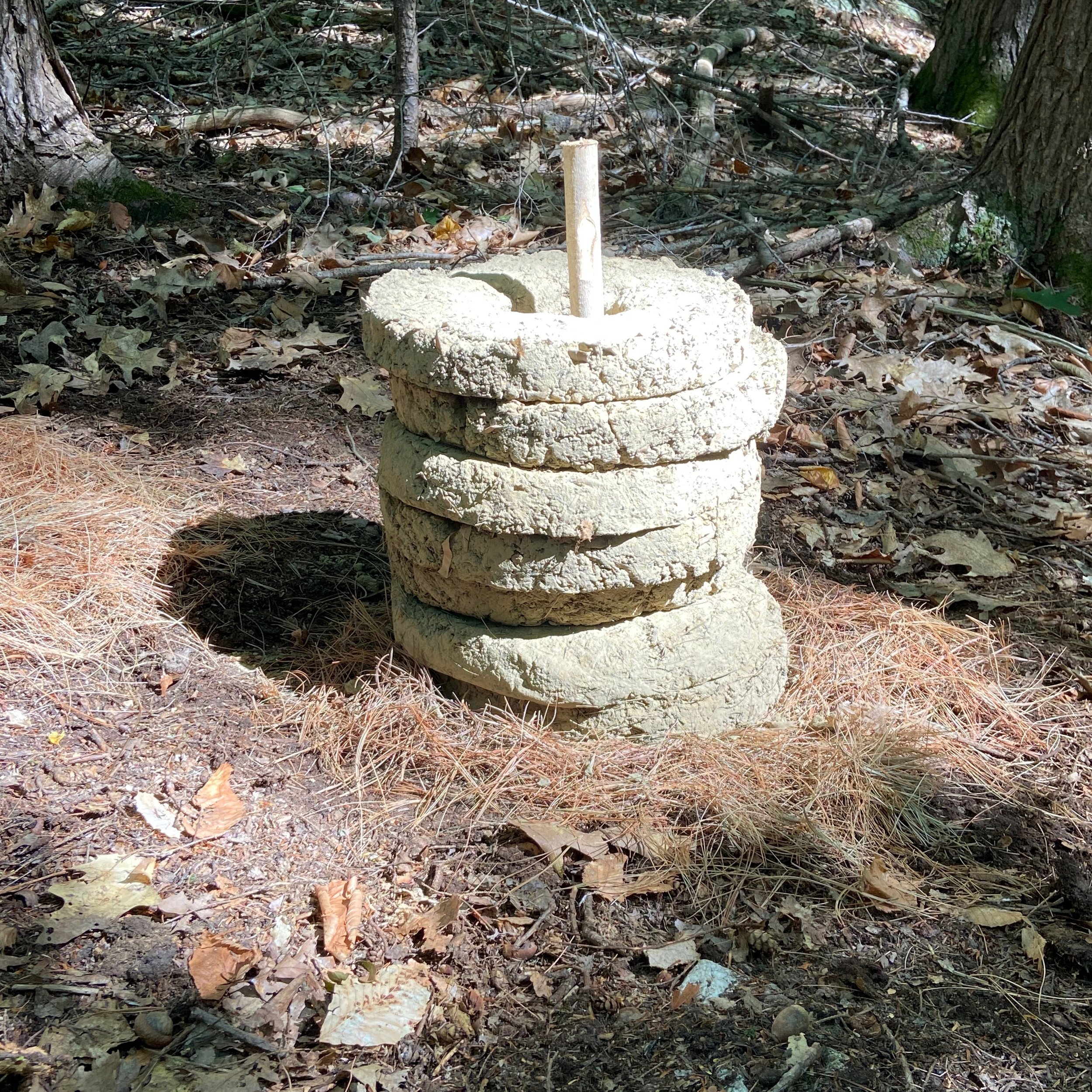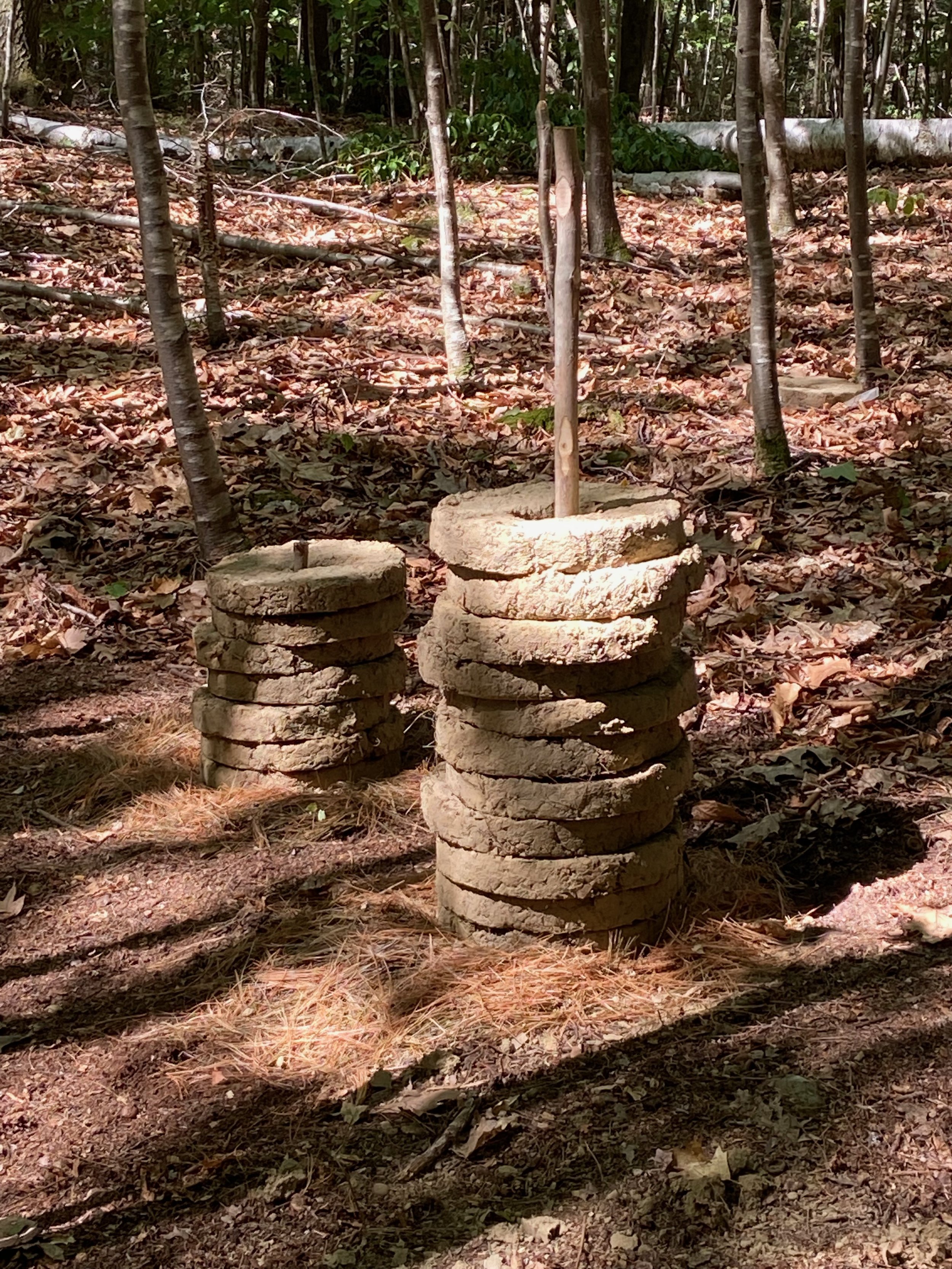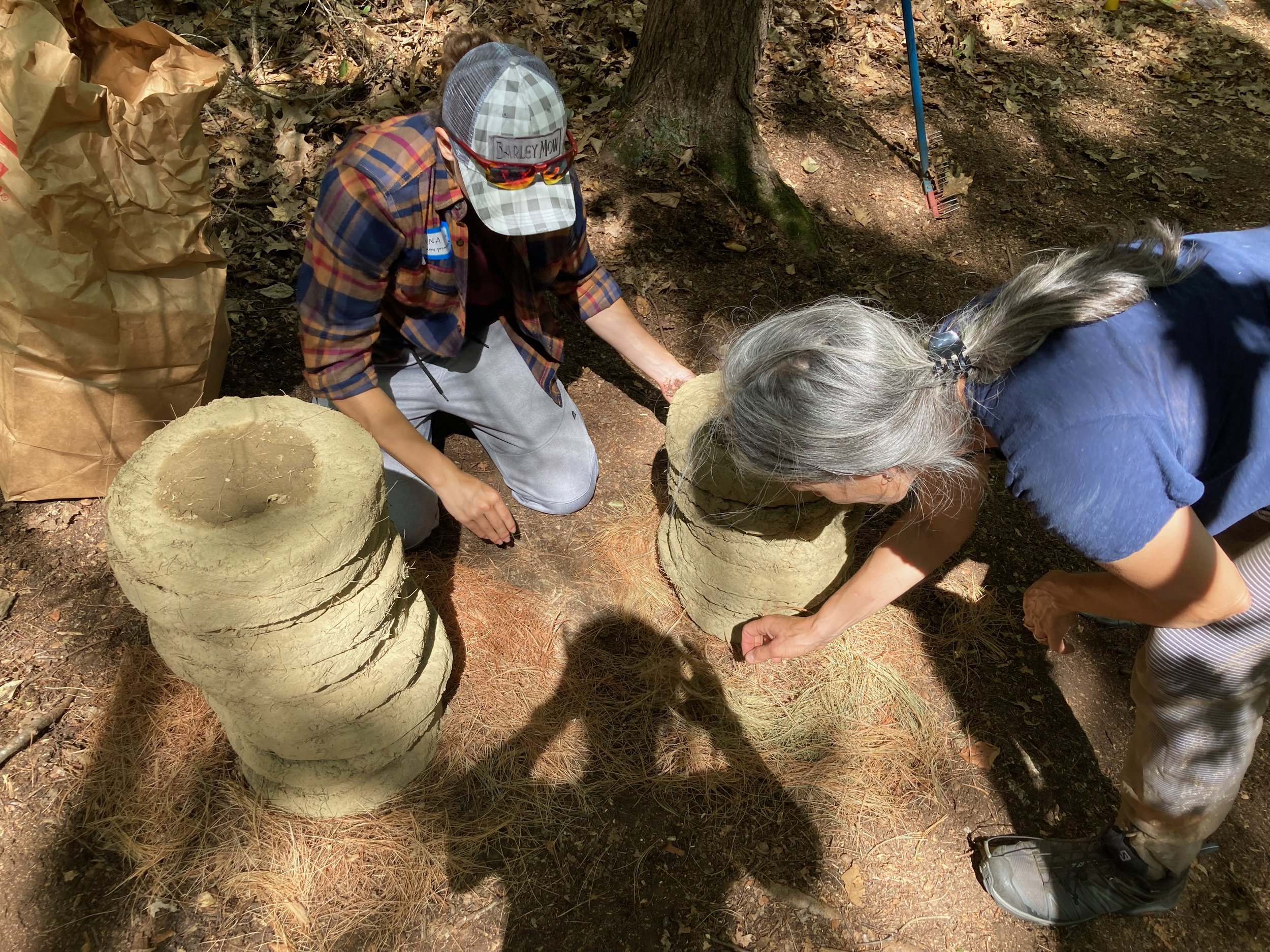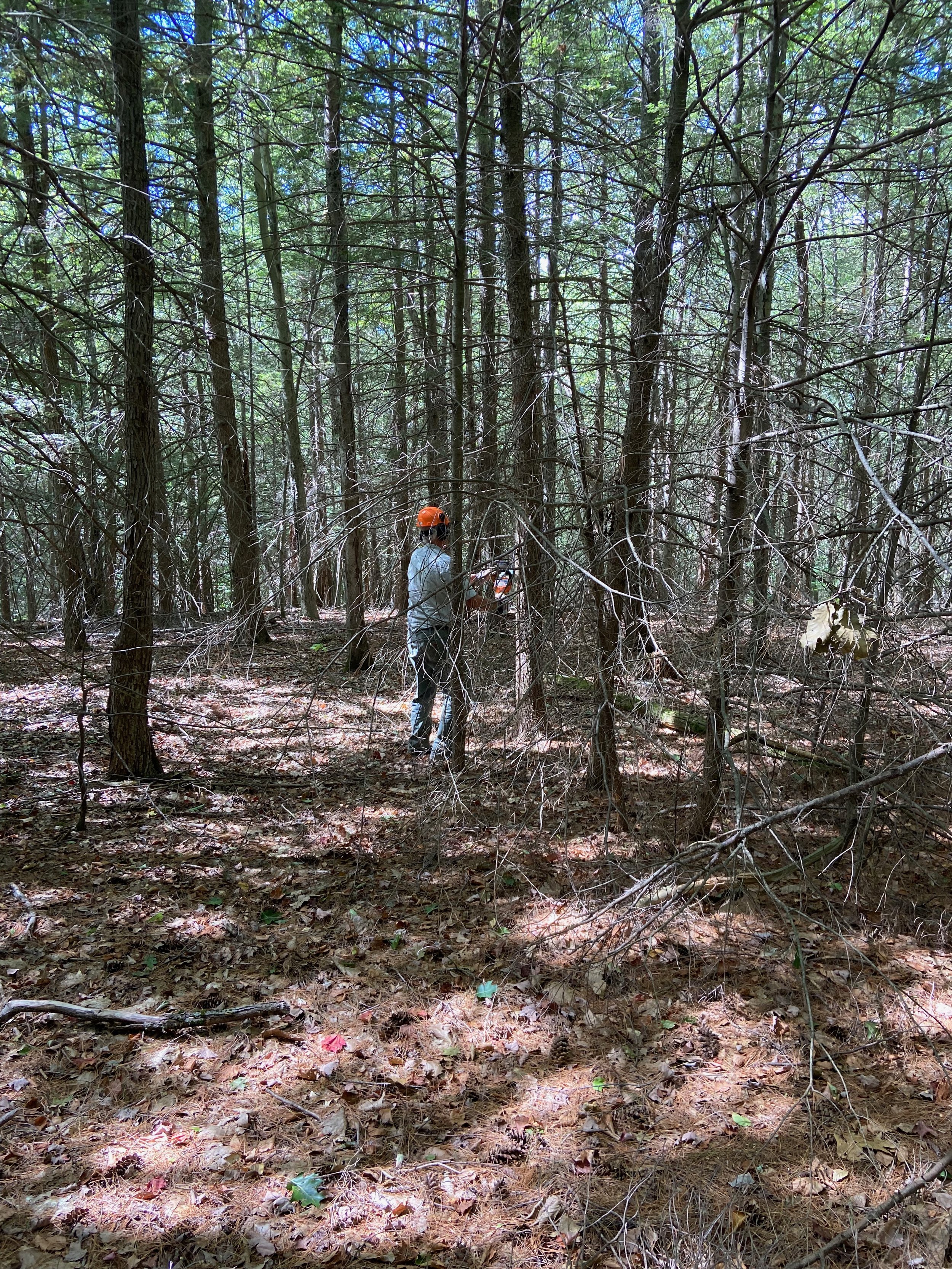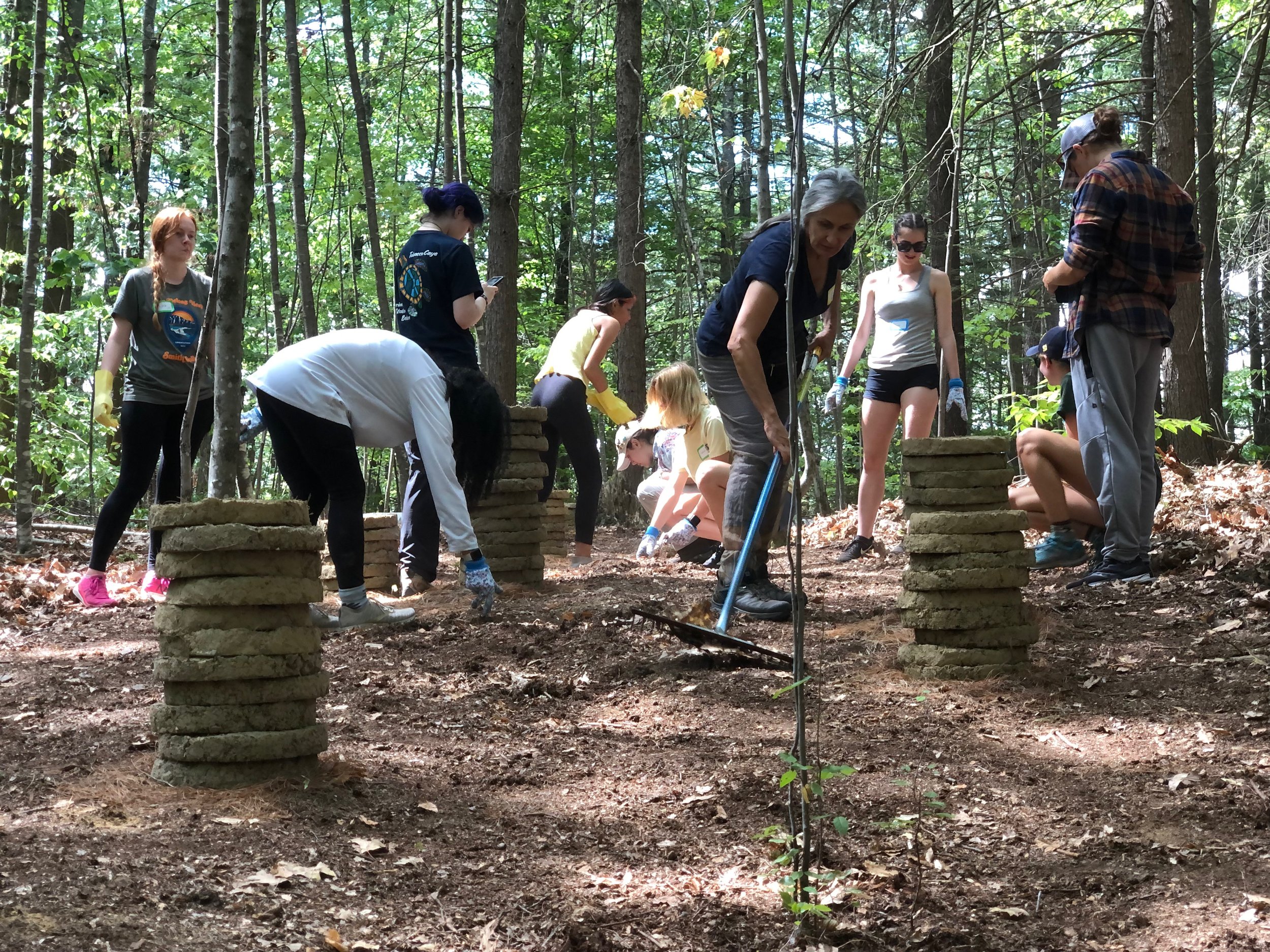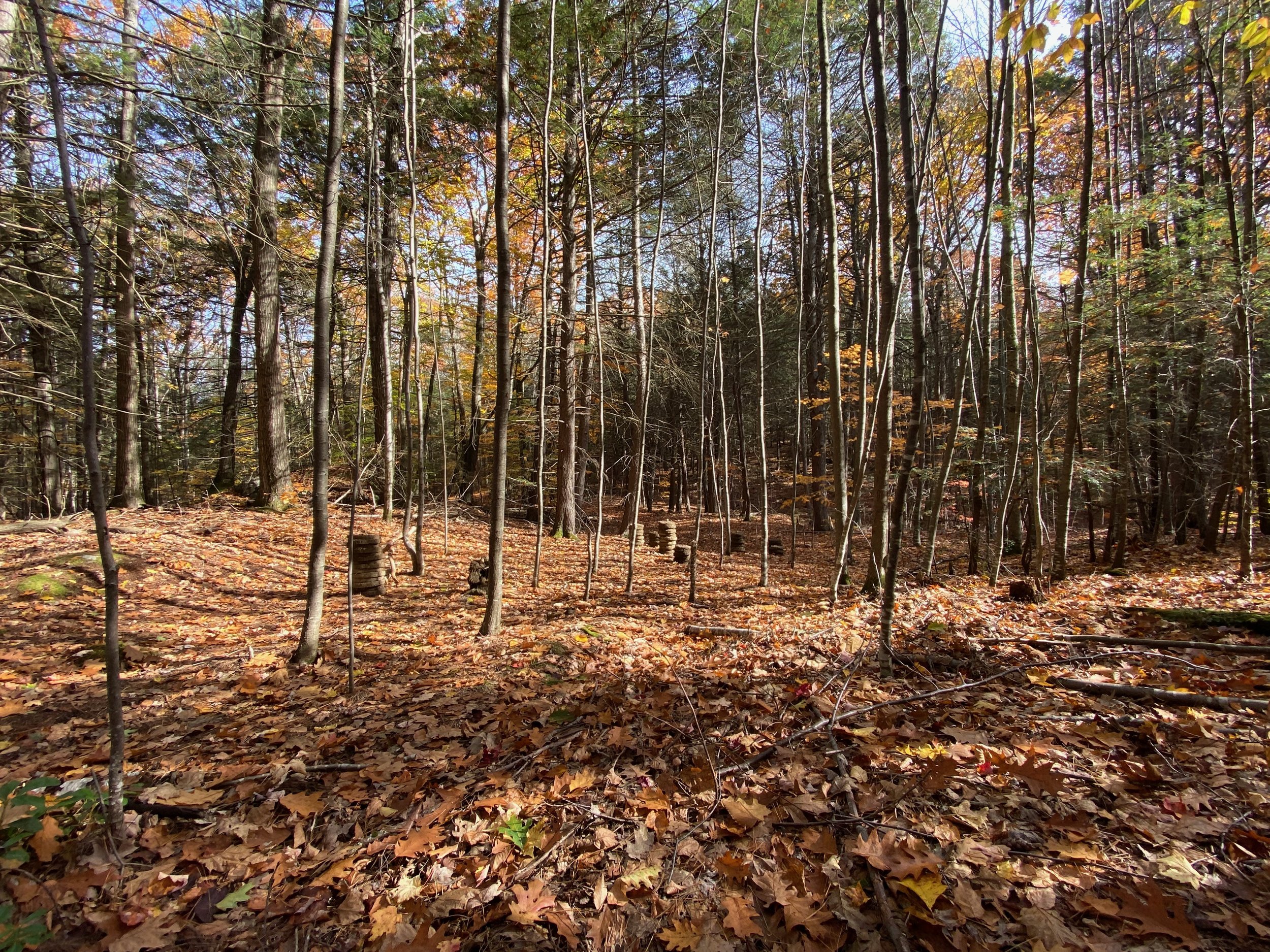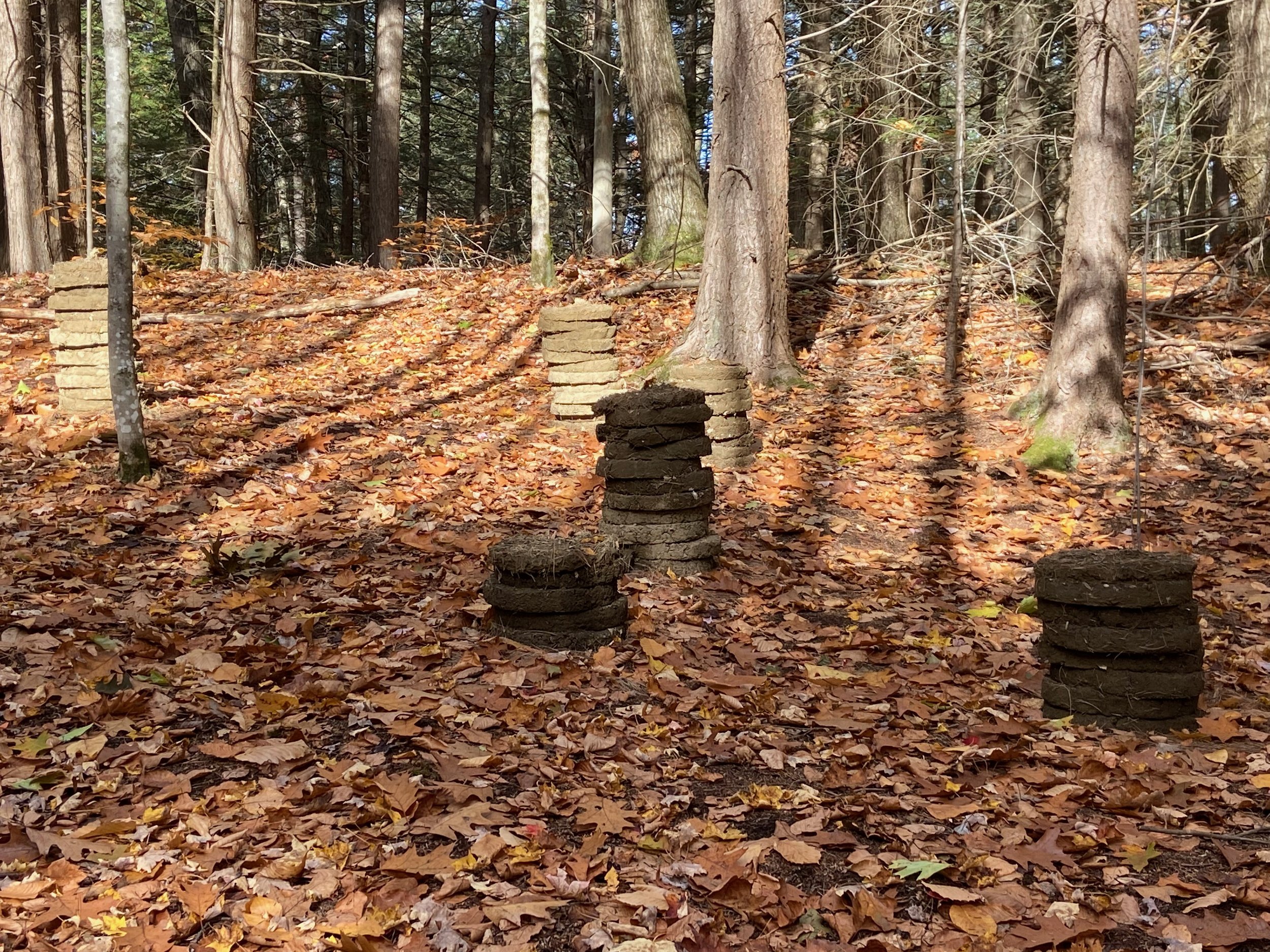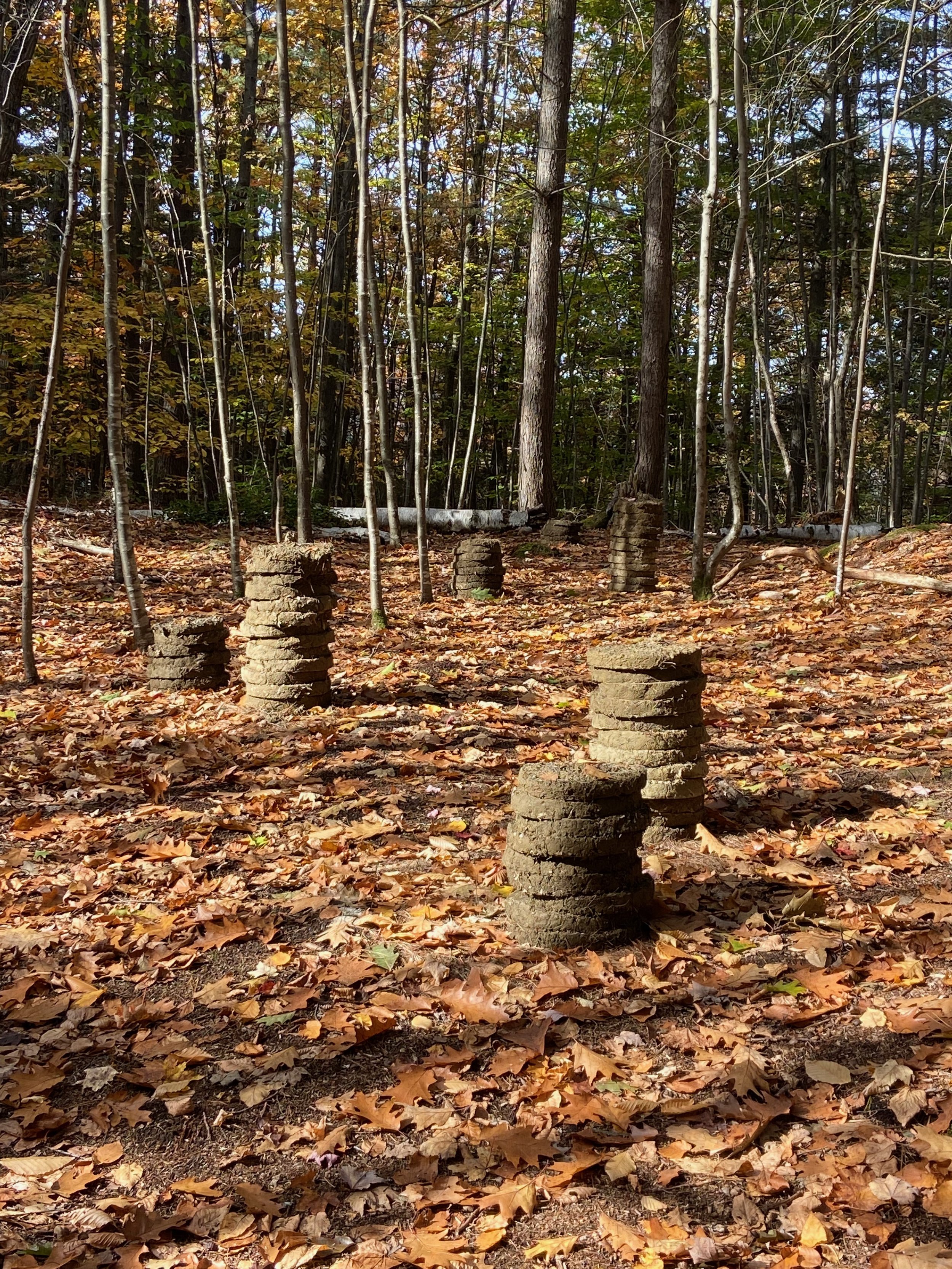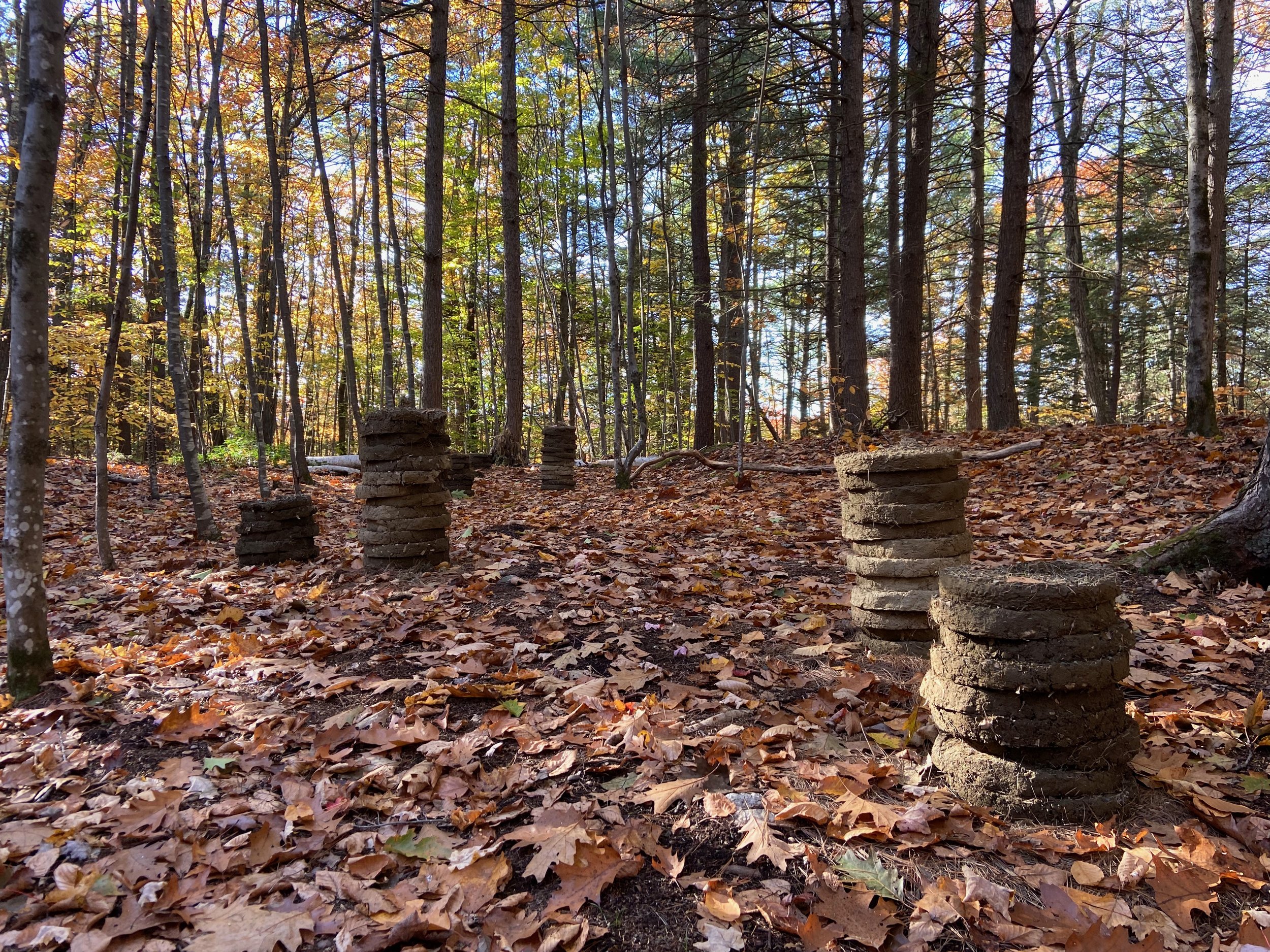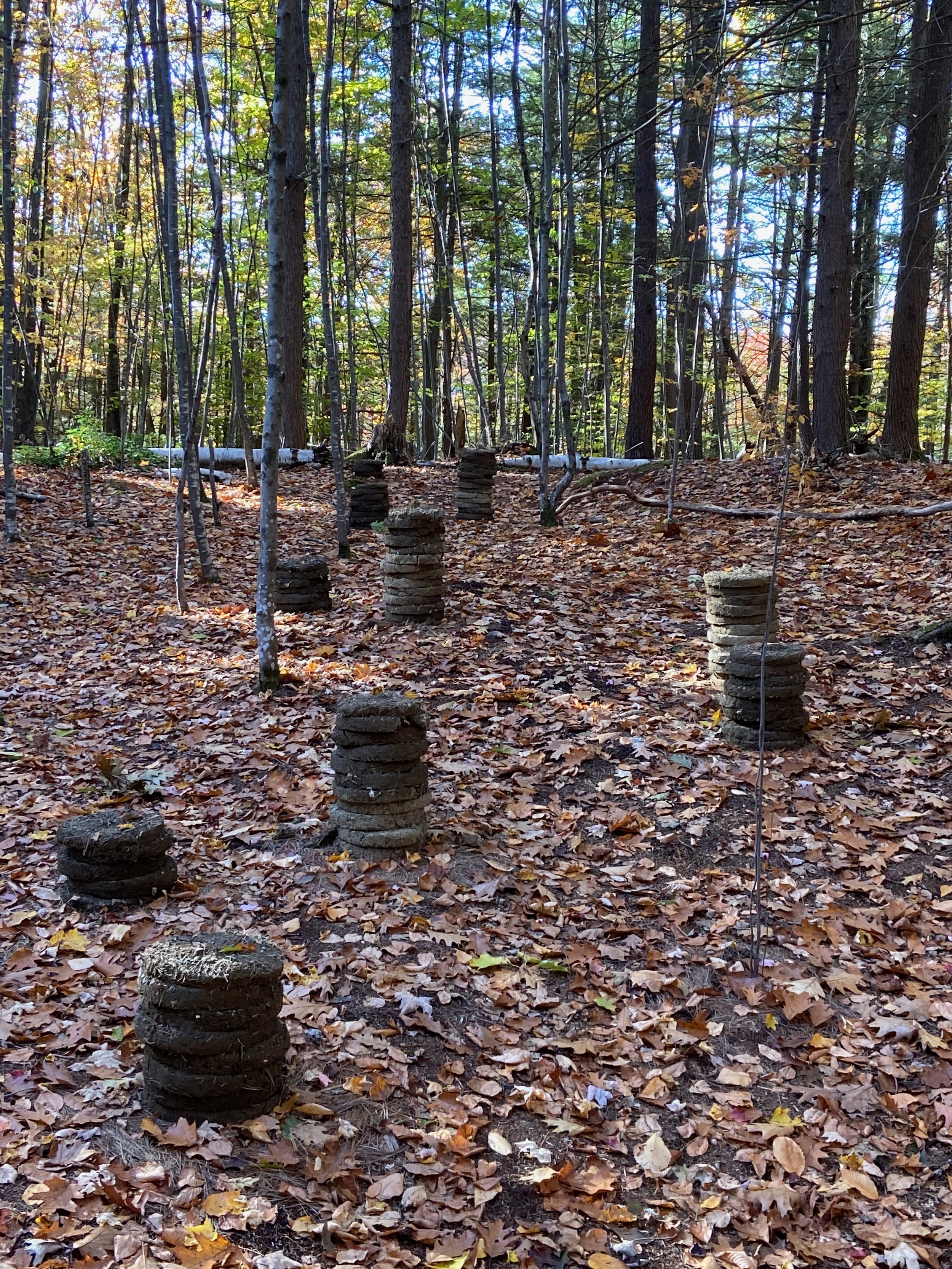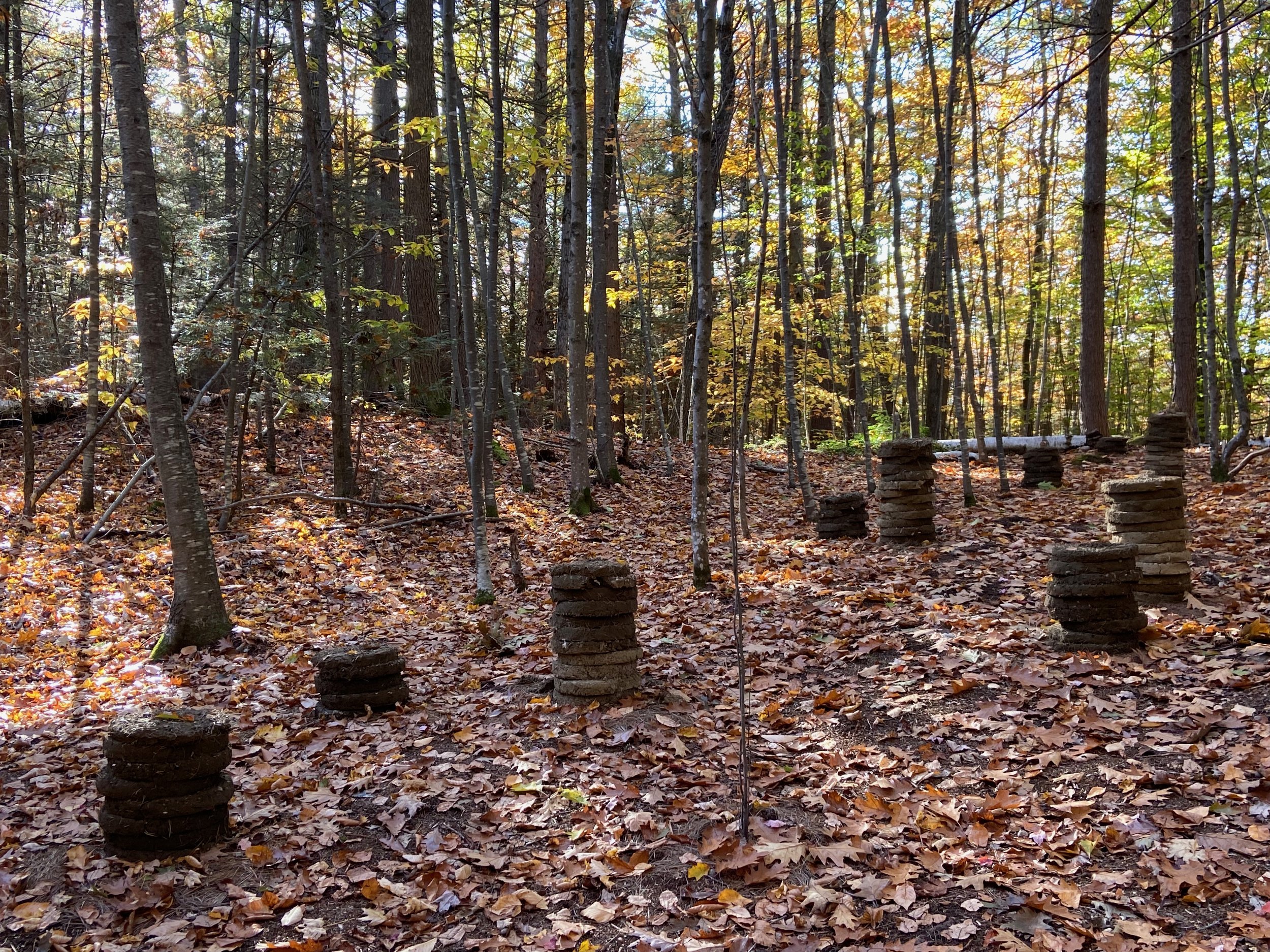Grounding is a memorial. An installation of 100 vertical earth elements, the project is sited in the resilient forest of the MacLeish Field Station in Whately, MA at the juncture of fractured ecosystems. These composite funerary forms embody a literal and metaphorical collage of time and are a meditation on climate induced loss of biodiversity.
Inspired by soil core formations, the tessellating earth elements vary in height and diameter… decast for installation. When placed at this clearing, between an infested Hemlock forest and burgeoning birch grove, the elements are signposts and echoes.
Approximately 25’ x 100’, wood, soil, plant debris, cured white pine needles
Production support by Paul Wetzel, Joanne Benkley, Paul Mezey, Mira Katz-James, Katarzyna Wisnauckas, Hannah Carleton, Isobel Hamilton, Veda Hedgepath, Eleanor Gallay, Pippa Powell, Hala Anderson, Emma McRedmond, Eloise Silver Van Meter, Yuzhang Fu, Emma Geissinger Cutchins, Quin Berfield-Brewer, Olivia Morningstar, Ellen Smith, Jill Ferraro, Ellery Zych, Mia Schildbach, Yilin Gu, Fiona Ward Shaw, Alina Tschumakow, Yelena Davidson, Ruthie Williams, and Shreya Sen
To read about the scientific research conducted by Danielle Ignace, Aliza Fassler, and Jesse Bellemare that inspired this artwork click here.
Ecotones at Arts Afield
In the fall of 2019, I was invited by Arts Afield, a Smith College arts initiative, part of the Center for Environment, Ecological Design, and Sustainability CEEDs to create earthwork sculptures at the MacLeish Field Station in Whately, Massachusetts. Ecotones is comprised of two distinct temporal art works—The Tell of Grass (2021) and Grounding (2022)—made with materials harvested from the 190 acres of hilltop forest. They are intended to move through state changes as the vagaries of time and weather lay waste to the materials returning the artworks to the land. In this way the sculptures collaborate directly with nature, contributing both to their building and their dissolution. Each tells a topographical story of life and death in accelerated cycles reflecting the pace of change in our warming world and are artifacts of working in a place for several years— a narrative of data, observations, materials and experiences. When seen together, the artworks offer a conversation between two ecosystems and a phenological study of place and are imbued with a personal understanding of the particularities of MacLeish formed from my interactions with weather, science and the land itself.
Process, Installation, and Change Over Time
About Arts Afield at MacLeish Field Station
The Center for the Environment (CEEDS) established the Arts Afield program in order to formalize and encourage work in the arts and humanities at the MacLeish Field Station with the goal of investigating and contributing to the development of ecological consciousness. Arts Afield recently joined the national Long Term Ecological Reflections Project (LTERP), a consortium of academic field stations that take a 200-year look at ecological changes on field station grounds. To facilitate this process at MacLeish, they have developed ten reflection plots, each with its own survey marker and GPS coordinates. Each plot was selected for a special characteristic, such as its topography, vista, or cultural history. For more information about CEEDS and the research at MacLeish that has inspired our our work click here.











